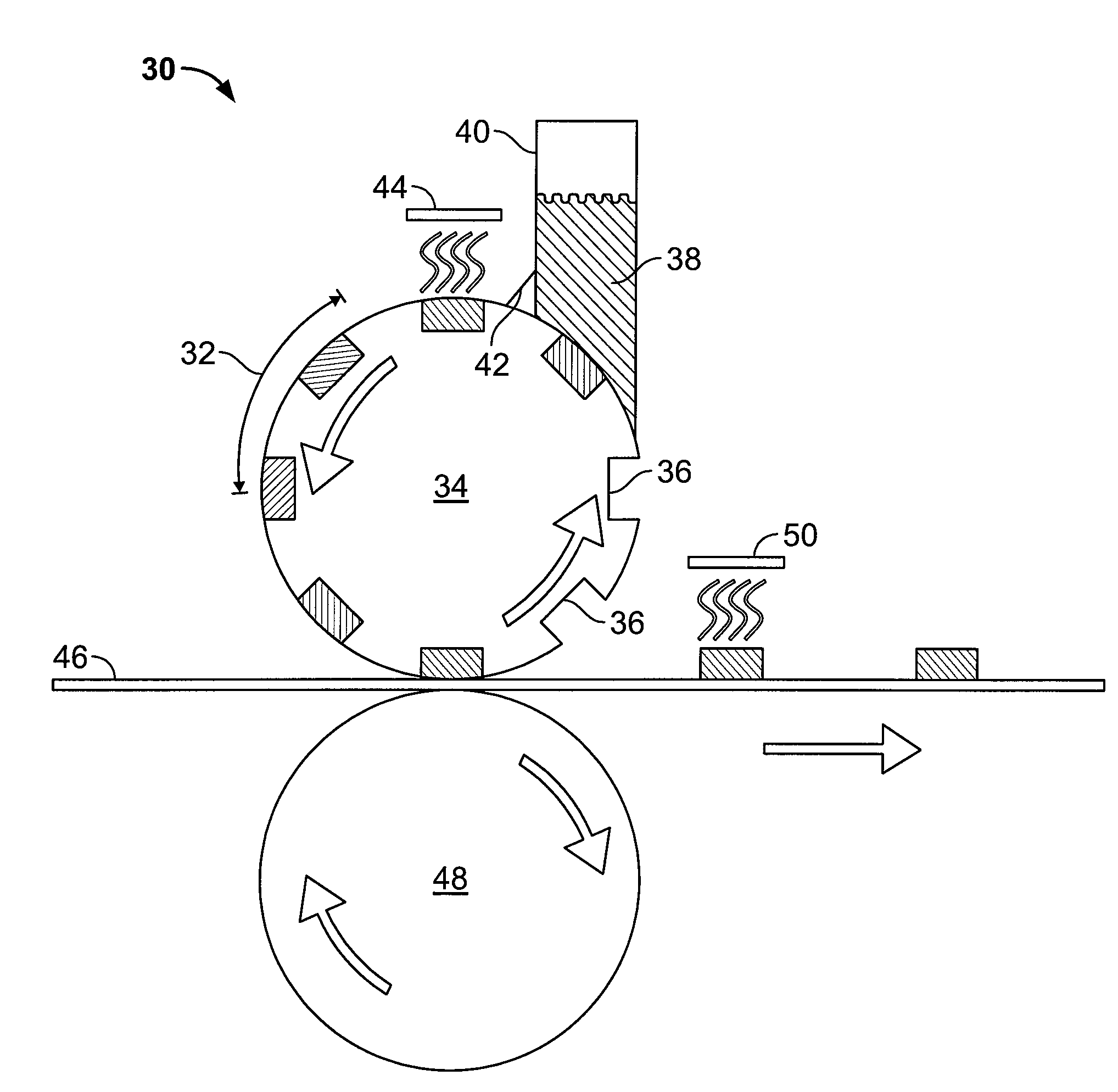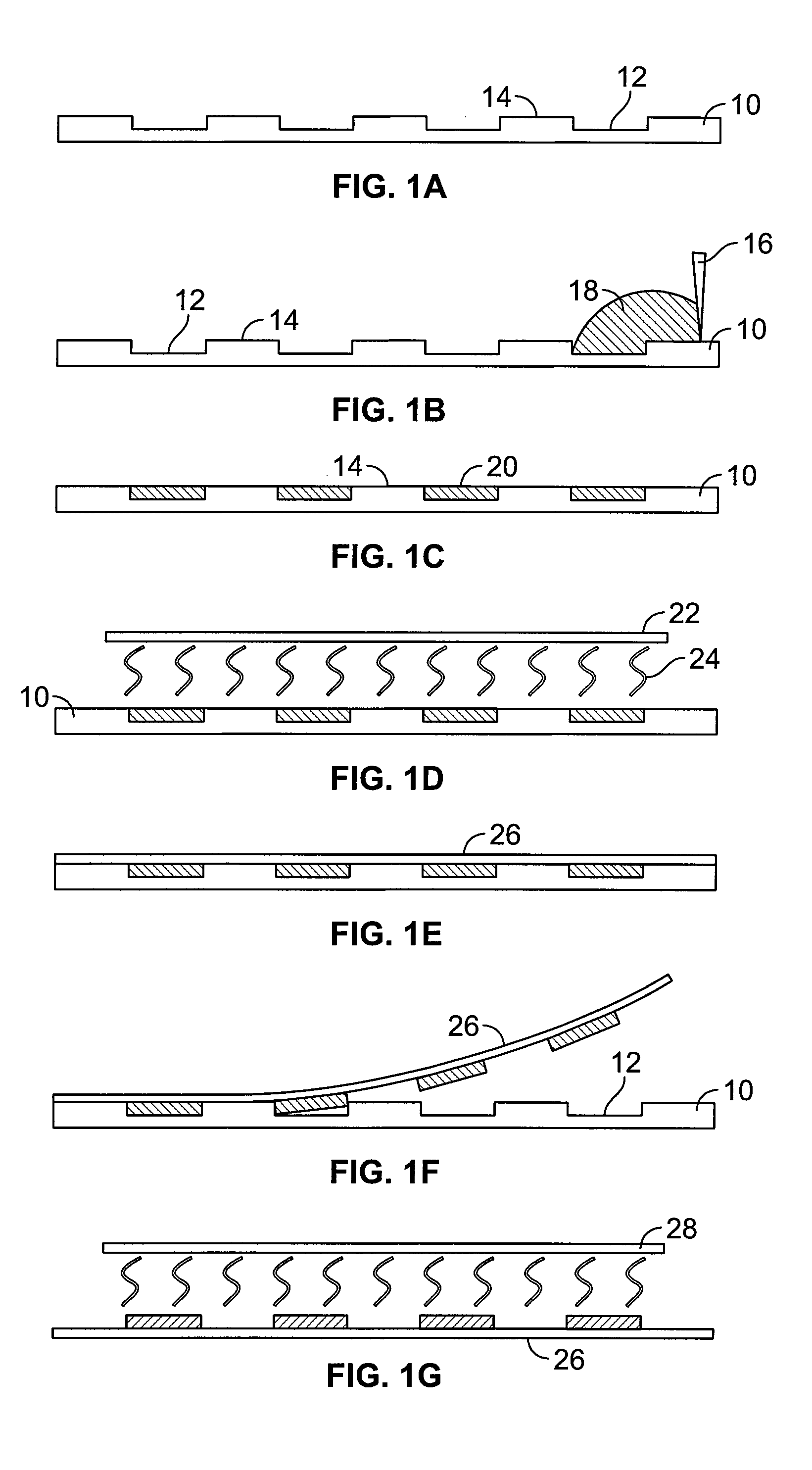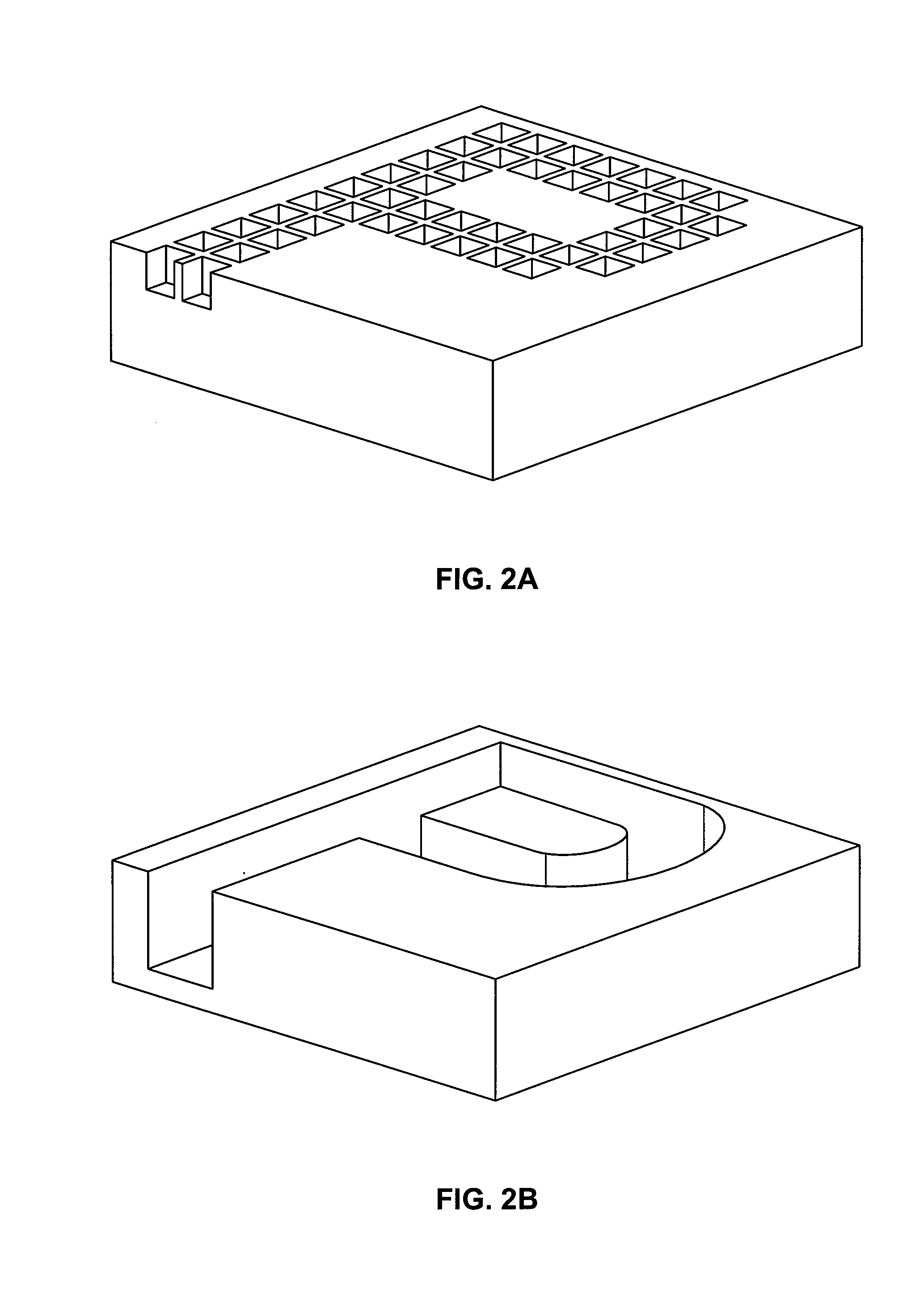Intaglio Printing Methods, Apparatuses, and Printed or Coated Materials Made Therewith
a printing method and inkjet technology, applied in the field of inkjet printing methods and apparatuses, can solve the problems of two-component epoxy systems, inability to efficiently remove ink from recesses or cells, general less suitable outdoors or otherwise, etc., and achieve the effect of high resin transfer efficiency
- Summary
- Abstract
- Description
- Claims
- Application Information
AI Technical Summary
Benefits of technology
Problems solved by technology
Method used
Image
Examples
example 1
[0074]UV Cationic Curing Resin, Printed onto a Label Using Gravure Printing
[0075]UVR-6105, a cycloaliphatic epoxy resin; DER 331, a bisphenol A epoxy resin; and UVI-6976, a mixture of triaryl sulfonium hexafluoroantimonate salts were combined in a ratio of 45.5 parts / 45.5 parts / 0.05 parts by weight, respectively. All of these resins are commercially available from Dow Chemical. The resulting actinic radiation curable doming resin composition, which was a UV cationic curing resin composition, was a clear, transparent liquid having a viscosity of 2,000 cps at 25° C.
[0076]The composition is mixed with a suitable pigment and then applied onto a gravure roller having mold cavities in the formation of a desired image. The pigmented composition is then partially cured using UV light at a predetermined wavelength range, intensity, and duration, such that the resin in the inner mold cavity portions is hardened, while the exposed resin surfaces remain tacky or in a relatively uncured state. B...
example 2
[0078]Modification of the Curing Characteristics of Acr late UV Curable Resin Compositions,
[0079]UV curable resin System A, System B, and System C, comprising acrylate polymers, acrylate monomers, photoinitiators, etc. were prepared by mixing these constituents in the proportions by weight, as shown in the following Table 1:
TABLE 1Acrylate UV Curing SystemsSystem ASystem BSystem CTypeUrethane Acrylate Polymer,65.065.065.0Acrylate PolymerER-05002-82Lauryl Acrylate Monoacrylate16.216.216.2MonofunctionalAcrylate Monomer1,6-Hexanediol Diacrylate15.615.615.6DifunctionalMonomerAcrylate MonomerIrgacure 184 Photoinitiator1.812.3Surface CureIrgacure 819 Photoinitiator——0.15Through CureTinuvin 328——0.5UV Light StabilizerTinuvin 765 Stabilizer——0.5Hindered AmineLight
[0080]A 2.0 mm high dome of the UV curable acrylate resin composition, System A, was cured under a high intensity mercury “D” lamp at conveyor speed of 20 ft / min, and the air-exposed surface of the composition fully cured to a tack...
example 3
Modification of the Characteristics of Thiol-ene UV Curable Resin Compositions,
[0084]UV curable resin System E and System F, comprising the thiol compound pentaerythritol tetramercaptopropionate, acrylate polymers and monomers, etc. were prepared by mixing these constituents in the proportions by weight, as shown in the following Table 2:
TABLE 2Thiol-ene UV Curing SystemsSystem DSystem ETypeUrethane Acrylate Polymer,63.863.8Acrylate PolymerER-05002-155Triethylene Glycol Divinyl12.812.8DifunctionalEther MonomerVinyl EtherTriphenyl Phosphite 1.01.0StabilizerMicronized Red Pigment—0.4Red PigmentIrgacure 184 Photoinitiator 1.01.4Surface CureIrgacure 819 Photoinitiator—0.25Through CurePentaerythritol20.220.2ThiolTetramercaptopropionate
[0085]Both of the UV curable thiol-ene resin compositions, Systems D and E above, were completely through cured (i.e., had cured bodies) after exposure to a high intensity mercury “D” lamp at a conveyor speed of 20 ft / min, while the air-exposed surfaces of ...
PUM
 Login to View More
Login to View More Abstract
Description
Claims
Application Information
 Login to View More
Login to View More - R&D
- Intellectual Property
- Life Sciences
- Materials
- Tech Scout
- Unparalleled Data Quality
- Higher Quality Content
- 60% Fewer Hallucinations
Browse by: Latest US Patents, China's latest patents, Technical Efficacy Thesaurus, Application Domain, Technology Topic, Popular Technical Reports.
© 2025 PatSnap. All rights reserved.Legal|Privacy policy|Modern Slavery Act Transparency Statement|Sitemap|About US| Contact US: help@patsnap.com



